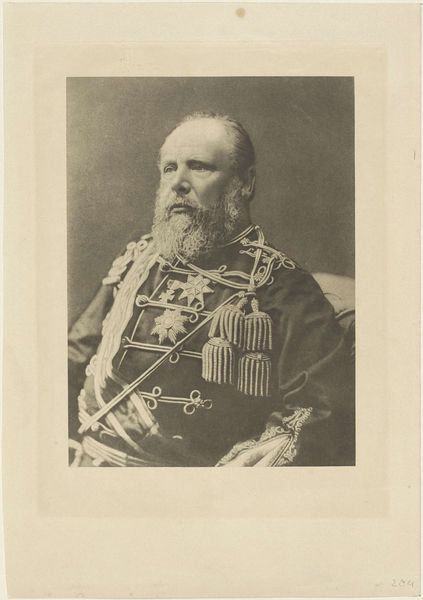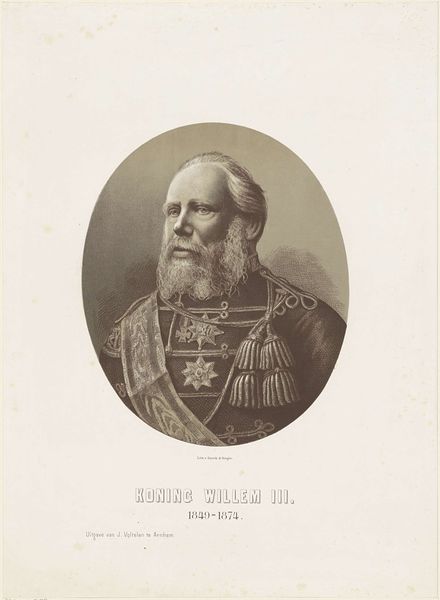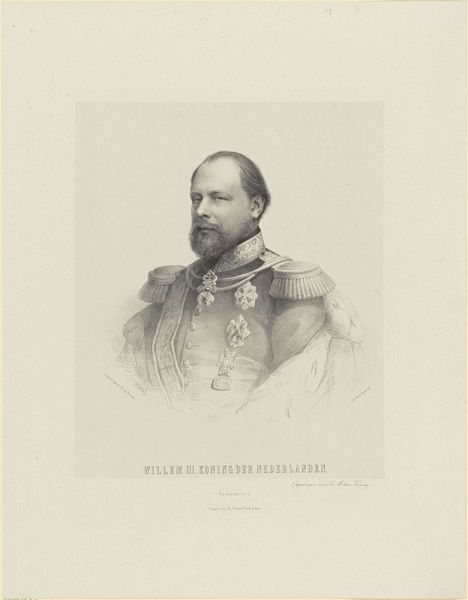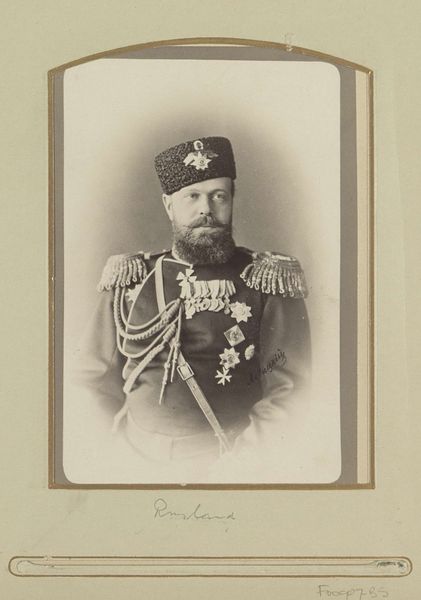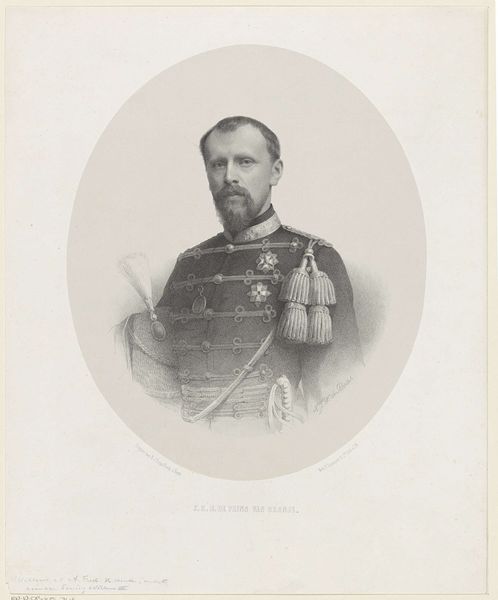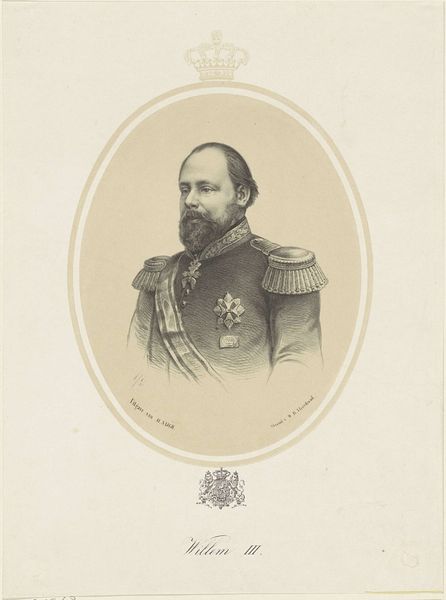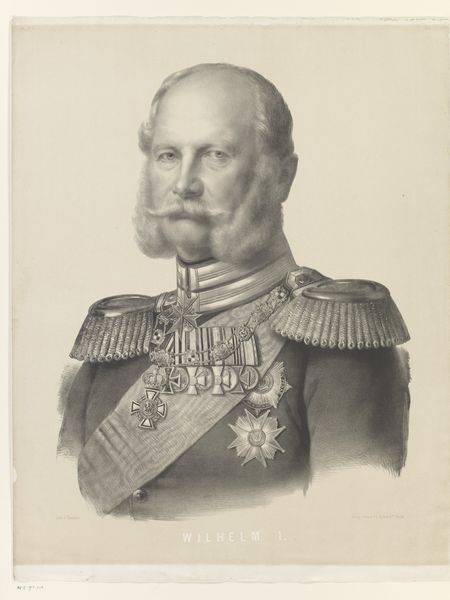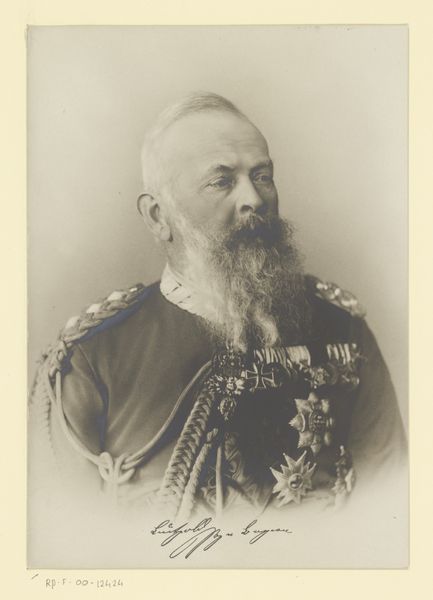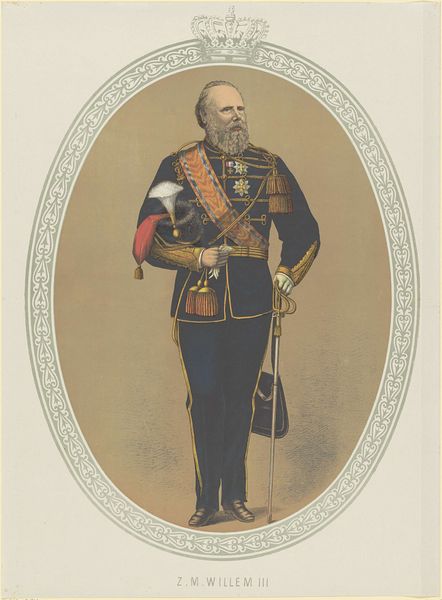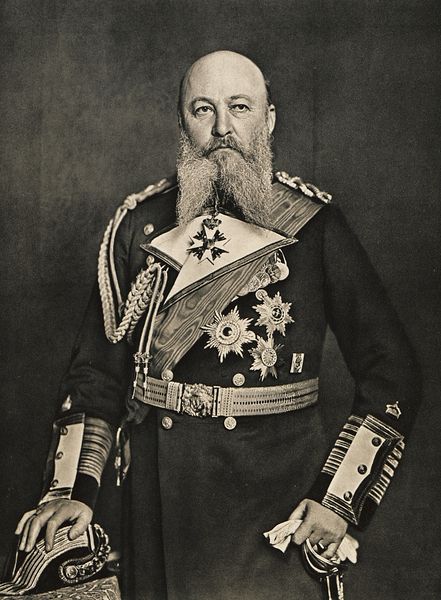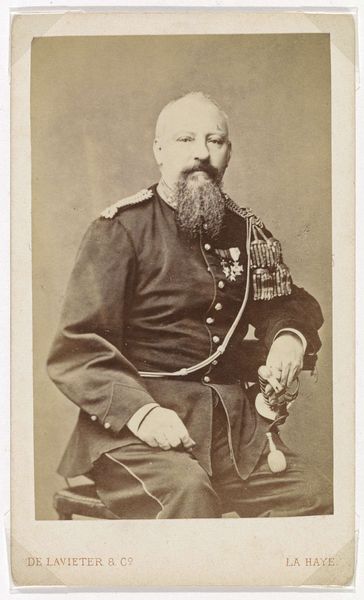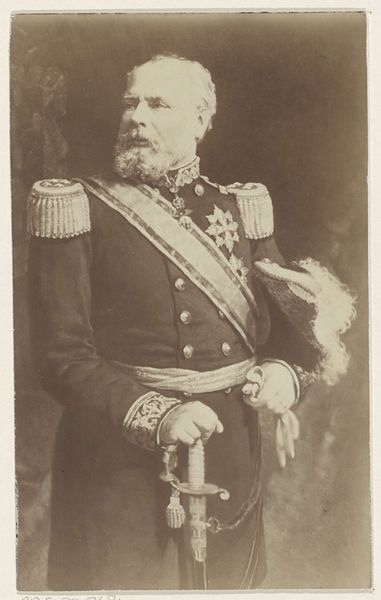
print, engraving
#
portrait
# print
#
old engraving style
#
archive photography
#
historical photography
#
history-painting
#
academic-art
#
engraving
#
realism
Dimensions: height 713 mm, width 562 mm
Copyright: Rijks Museum: Open Domain
Editor: Here we have an engraving titled "Portret van Willem III, koning der Nederlanden," dating from between 1870 and 1894. It’s a formal portrait, meticulously detailed. What’s striking is the weight of representation and how that operates politically. How do you interpret this work? Curator: Indeed. It’s vital to understand how portraiture, particularly of monarchs, functions within systems of power. Willem III is presented here in a manner designed to convey authority and legitimacy. Consider the engraving medium itself – a reproducible image, disseminating this carefully constructed persona widely. What does that say about image control in this period? Editor: So, the portrait isn’t just about Willem III as an individual, but about the *idea* of kingship that’s being projected? The rigid pose, the decorative frame – it all seems so staged. Curator: Precisely. The stagecraft is critical. We need to dissect the semiotics of power on display here: the military regalia, the calculated gaze, the framing elements… all speak to a construction of identity intended to solidify the monarchy's position and its connection to earlier historical frameworks of aristocratic entitlement. Can we consider it propaganda? Editor: That's fascinating. It makes me think about the power dynamics inherent in the act of viewing, then and now. How much agency did people really have in receiving these carefully crafted images? Curator: Exactly. These are the pertinent questions. Analyzing representation, we understand both the aspirations and the potential anxieties of a ruling class. The engraving prompts reflection on spectatorship, reception, and the enduring legacy of constructed historical narratives. Editor: This really reframes how I see these historical portraits. It's not just about the person, it’s about the system that put them there. Curator: Yes. Art becomes a site for understanding how power operates, how identity is constructed, and how history itself is shaped.
Comments
No comments
Be the first to comment and join the conversation on the ultimate creative platform.
